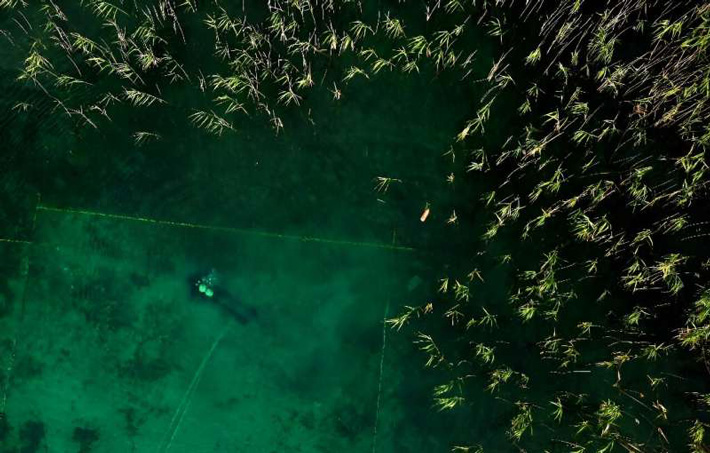 BERN, SWITZERLAND—Remnants of a Neolithic stilt village radiocarbon dated to about 6000 B.C. have been found in Albania’s Lake Ohrid, according to an AFP report. “It is several hundred years older than previously known lake-dwelling sites in the Mediterranean and Alpine regions,” said Albert Hafner of the University of Bern. The village, situated on the edge of the lake in the mountains along the border of North Macedonia and Albania, would have been home to between 200 and 500 people. It is thought to have been surrounded by a barricade of 100,000 spiked planks. “To protect themselves in this way, they had to cut down a forest,” Hafner explained. Archaeologist Adrian Anastasi said that analysis of tree rings of the preserved wood will reveal insights into the region’s climate and environmental conditions. Remains of seeds, plants, and bones of wild and domesticated animals suggest the village’s inhabitants raised some livestock and planted crops, added archaeologist Ilir Gjepali. For more on the archaeology of Albania, go to "Letters from Albania: A Roadtrip Through Time."
BERN, SWITZERLAND—Remnants of a Neolithic stilt village radiocarbon dated to about 6000 B.C. have been found in Albania’s Lake Ohrid, according to an AFP report. “It is several hundred years older than previously known lake-dwelling sites in the Mediterranean and Alpine regions,” said Albert Hafner of the University of Bern. The village, situated on the edge of the lake in the mountains along the border of North Macedonia and Albania, would have been home to between 200 and 500 people. It is thought to have been surrounded by a barricade of 100,000 spiked planks. “To protect themselves in this way, they had to cut down a forest,” Hafner explained. Archaeologist Adrian Anastasi said that analysis of tree rings of the preserved wood will reveal insights into the region’s climate and environmental conditions. Remains of seeds, plants, and bones of wild and domesticated animals suggest the village’s inhabitants raised some livestock and planted crops, added archaeologist Ilir Gjepali. For more on the archaeology of Albania, go to "Letters from Albania: A Roadtrip Through Time."
8,000-Year-Old Neolithic Village Explored in Albania
